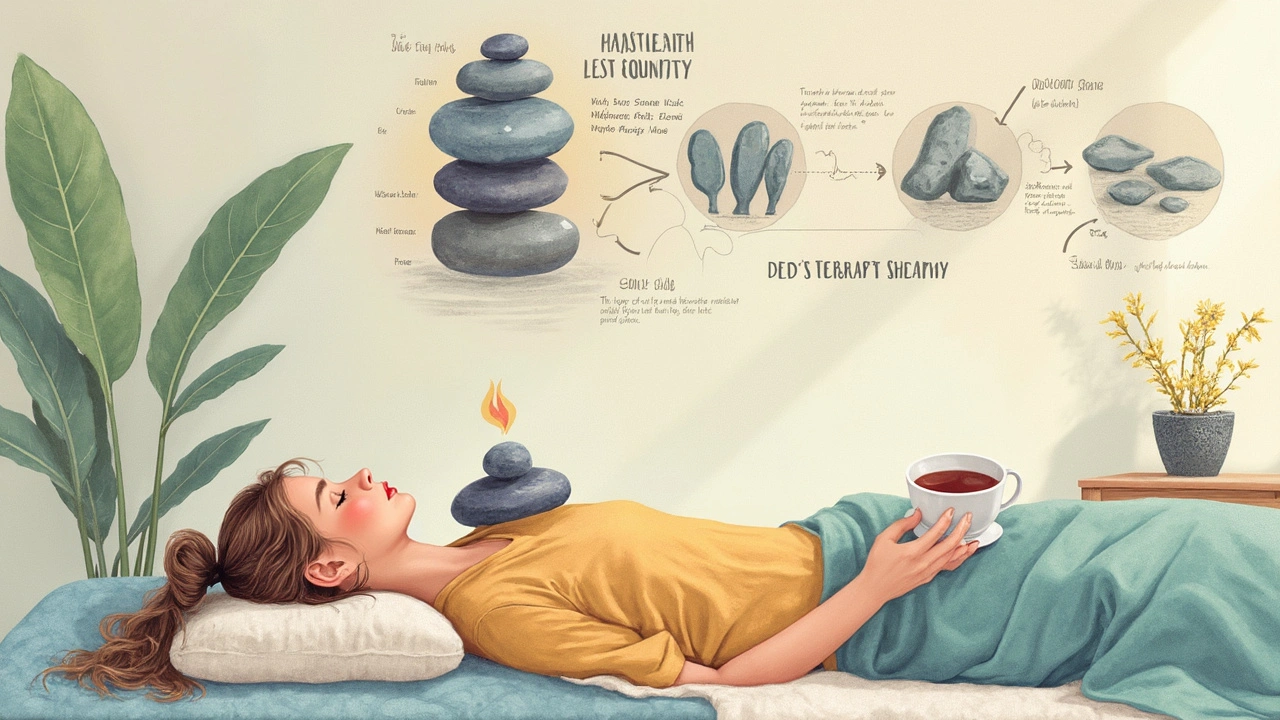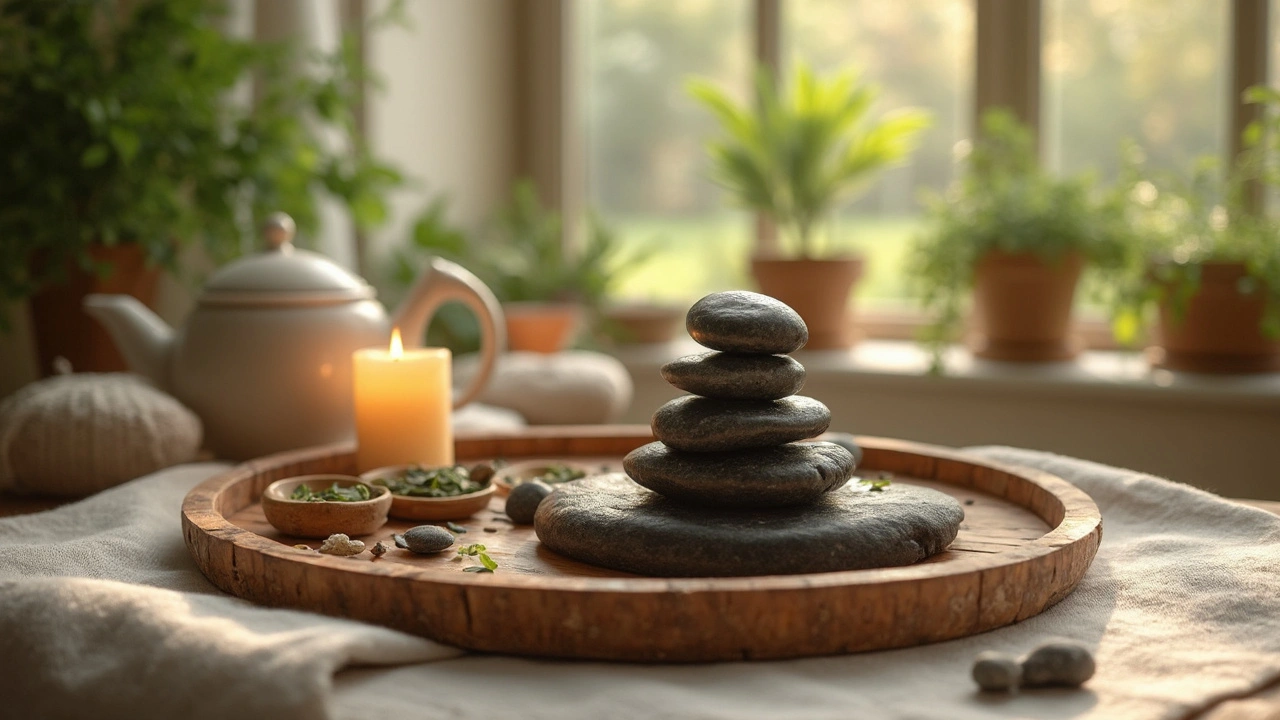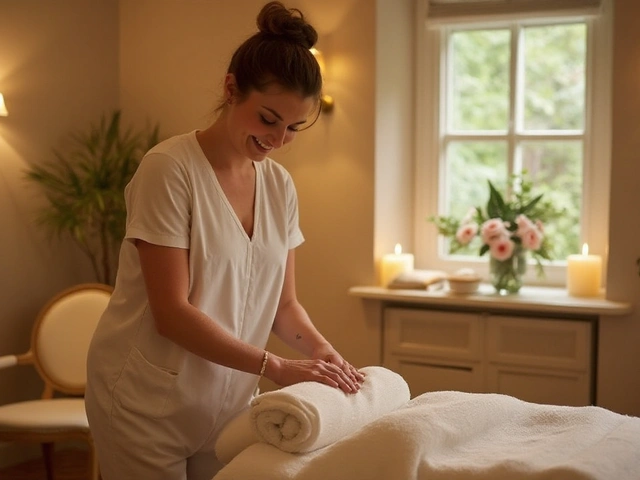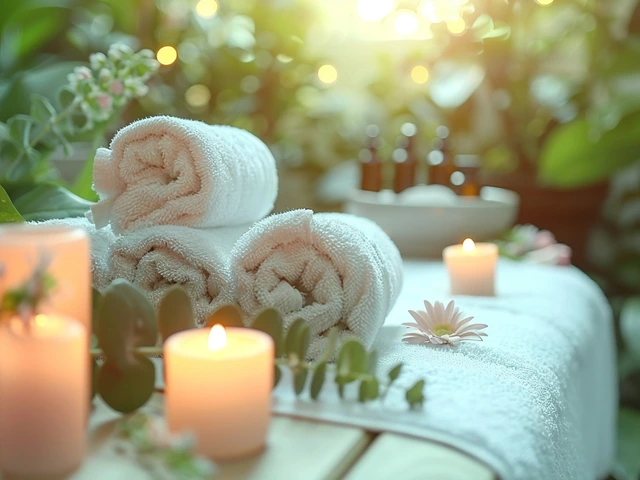Imagine melting away tension while warm, smooth stones glide across your back, each one delivering a wave of calm deeper than you thought possible. It sounds almost magical, but this is the real experience of stone massage—an old practice making a big comeback in modern wellness. There’s something enchanting about combining earth’s most basic elements with mindful touch. It’s hard to believe that basalt stones, best known for lining riverbeds, turn out to be powerful tools against stress, muscle knots, and cold winter aches. Years ago, I would have lumped stone massage in with trendy spa fads. But after seeing even my hard-headed nephew swoon under those heated stones, I had to admit there’s more to it than meets the eye.
The History and Evolution of Stone Massage
Stone massage traces its roots back thousands of years. Ancient cultures across Asia and the Pacific, including the Chinese and Native Hawaiians, used heated stones as part of their healing rituals. For the Hawaiians, lava stones—called pohaku—were placed on sore muscles and wrapped around aching joints to ease pain and draw out illness. In China, practitioners used smooth stones with medicinal oils to unblock the body’s qi, or vital energy, a key idea in traditional Chinese medicine. Even Indigenous Australians are reported to have harnessed earth and heat for comfort and healing, sometimes burying heated stones for people to lie on. It’s striking to see how different cultures, separated by oceans, landed on similar methods using simple stones.
But stone massage as we know it—complete with neat rows of stones and strict hygiene protocols—really took off in the ‘90s, thanks to a therapist named Mary Nelson from Arizona. She developed a technique called LaStone Therapy, fusing ancient practice with modern massage. This approach blended both hot and cold stones: heat for relaxation and cold to reduce inflammation. What was once a niche treatment became a spa staple worldwide within a decade.
Today’s stone massage combines traditional wisdom with research-backed techniques. Quality spas use basalt because it retains heat for up to 45 minutes, ensuring the warmth penetrates deep into muscles. Some use marble or jade stones for their unique cooling and energetic properties. Modern massage isn’t just about comfort—it’s about supporting the body’s natural mechanisms for healing and stress reduction.
How Stone Massage Works: The Science Behind the Stones
This therapy isn’t just soothing—it’s surprisingly technical. So, what happens under your skin when a heated stone glides across your back? When applied, the warmth from basalt stones dilates blood vessels and improves circulation. With better blood flow, oxygen and nutrients rush into soft tissues, turbocharging your body’s natural repairs. At the same time, heat relaxes tight muscle fibers, making it easier for your therapist to reach deep knots without using heavy pressure, saving you those post-massage bruises.
A 2018 meta-analysis published in the "Journal of Bodywork and Movement Therapies" found that stone massage can cut muscle pain and stiffness by up to 30% in people with chronic pain. Don’t just think of this as pampering; it’s genuine help for sore backs and stiff necks, with results not far off what you’d see using medications like ibuprofen—without the stomach upset. What’s more, adding cold stones in a so-called contrast therapy routine boosts lymphatic drainage and calms inflammation, great news for anyone with an old soccer injury or dodgy knee.
Then there’s stress relief. Massage, in general, cuts cortisol—your main stress hormone. But studies suggest combining heat therapy with gentle massage drops anxiety and improves sleep quality. Bottom line: you’ll probably walk out yawning, ready for an early bedtime. Here’s a handy look at the physical response from stone massage:
| Effect | Description |
|---|---|
| Vasodilation | Blood vessels widen, increasing circulation |
| Endorphin Release | Body releases natural painkillers |
| Reduced Cortisol | Lowered stress hormone levels |
| Muscle Relaxation | Tight muscles loosen, improving mobility |
All this comes with almost no side effects—unless you have certain medical conditions like neuropathy or poor skin sensation (in which case, always check with a doctor first).

What to Expect from a Stone Massage Session
If you’re picturing just gently being pampered, the reality is a bit more involved—and even more satisfying. Usually, a session starts with your therapist laying warm stones along key points on your body: think spine, palms, and even between your toes. This first step kick-starts relaxation and gets you comfortable. After a few minutes, the massage begins. Your therapist will use gliding strokes, sometimes with the stones, sometimes with their hands, working on muscles with just the right amount of pressure. The stones act almost like extensions of their hands—smoothing, kneading, and probing gently.
Some therapists alternate hot and cold stones. That might sound alarming, but the coolness feels oddly invigorating, shutting down swelling and refreshing tired muscles. You’ll often smell lavender or eucalyptus drifting through the room, thanks to essential oils that pair well with gentle heat. Expect to feel heavy, warm, and a little floaty—many people say stone massage makes every ache buzz away, but without the soreness you sometimes get after deep tissue work. If you have ticklish feet or sore spots, don’t be shy—speak up, and your therapist will adjust their technique.
Your session typically lasts 60 or 90 minutes. By the end, most people notice their tension has dropped, they can move their neck more freely, and they’re calmer, sometimes to the point of feeling “spaced out.” If your goal is to reset after a week of back-to-back meetings or recover from standing on your feet all day (hello, busy baristas and nurses), stone massage can do more than any scented candle ever could. If you’re scheduling a stone massage, here are some tips so you get the most from it:
- Hydrate well before and after your session—massage moves out toxins, so you’ll want to flush them
- Avoid heavy meals right before your appointment; you’ll relax better on a light stomach
- Dress comfortably and leave plenty of time afterward—you might not want to do much right after
- If you have sensitive skin or a medical condition, let your therapist know up front
- Communicate! Good therapists want to know if a stone feels too hot or too cold. You won’t insult them, promise
Stone Massage at Home: Easy Tips for Beginners
You don’t need a degree in massage or a luxury spa budget to enjoy some of the perks of stone therapy at home. Maybe you’re like me and just want extra relief between pro sessions. Luckily, creating your own mini stone massage routine isn’t too tricky. Start with a set of smooth basalt or river stones; you can grab them online or scout local markets. Basalt’s best as it holds heat, but any smooth, dense stone works. You’ll also need a small pan of warm (not boiling!) water, a towel, and some unscented oil like sweet almond or grapeseed.
Here’s a basic step-by-step:
- Wash your stones well, then heat them in water until they’re warm but not uncomfortable to touch—test against your inner arm first
- Lay down on a soft blanket. Place a towel underneath to catch any drips
- Arrange the stones along your back, on your shoulders, or just in your palms for 10-15 minutes to start
- Massage tense spots with a little oil and a stone, using gentle, circular motions; avoid bony areas and stick to muscles
- After finishing, wipe down the stones and store them for next time
Don’t overdo it—limit to 30 minutes to avoid overheating or irritating your skin. You can also try chilled stones after workouts or on sore feet for a refreshing boost. Just skip this routine if you have diabetes, poor skin sensation, or a condition that affects temperature awareness.
If you want something extra, try adding a few drops of lavender oil to your massage blend (just be sure you’re not allergic), or put on relaxing music. My personal favorite post-massage move? Curl up on the couch with Leonid and a cup of chamomile tea. Nothing beats the combo of tired muscles and total peace.
Stone massage isn’t just woo—there’s a lot of solid evidence and centuries of practice behind it. Whether you’re after pain relief, better sleep, or a hard reset on your mood, putting your trust in a handful of smooth, warm stones might just be the simplest holistic therapy around. And if you’re curious but not ready to book a full spa day, those home tips are the perfect way to start.






